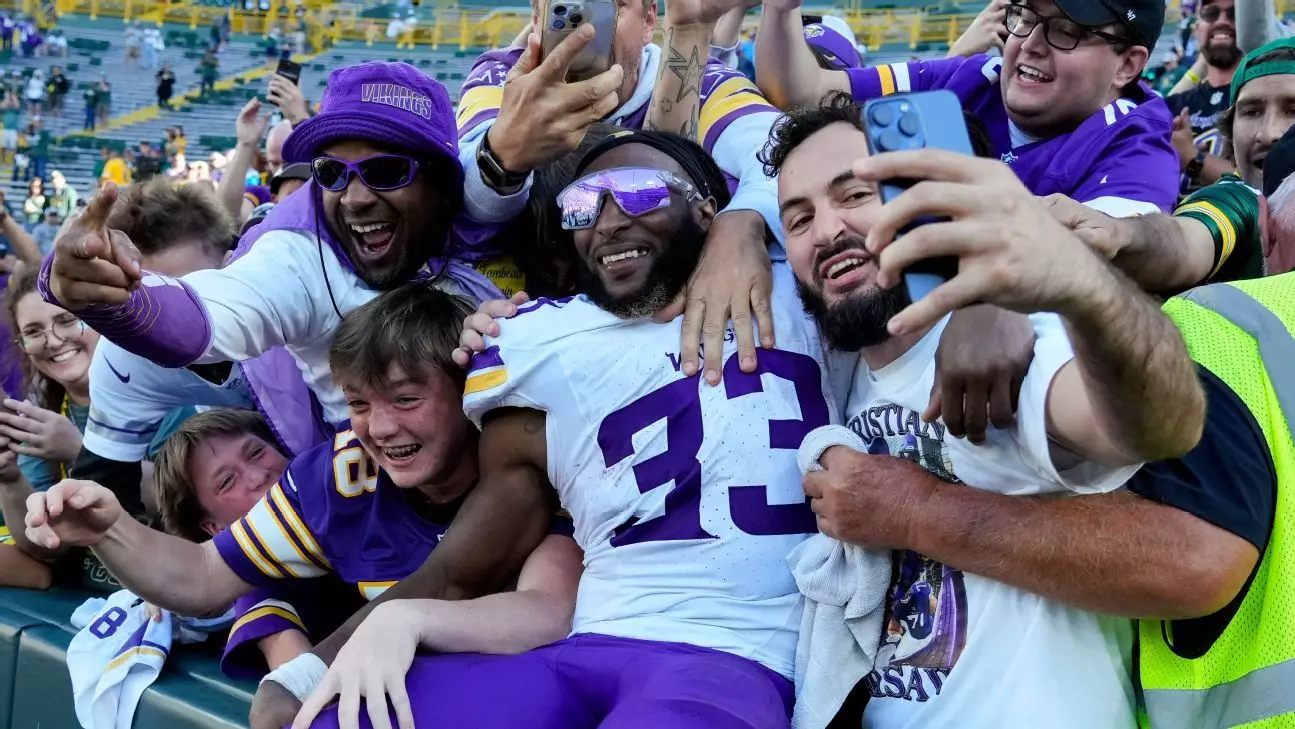As the Minnesota Vikings navigate the complexities of their backfield for the upcoming season, it is evident that change is on the horizon. Central to this reevaluation is the veteran running back Aaron Jones, who, despite a commendable performance in his inaugural season with Minnesota, may not be the focal point of their rushing attack moving forward.
Aaron Jones’ first year with the Vikings showcased his capabilities, as he boasted career-high statistics in touches, carries, and offensive snaps. Yet, as he approaches free agency at the age of 30, the Vikings are rethinking his role. Coach Kevin O’Connell expressed admiration for Jones’ skill set and contributions but acknowledged a desire to diversify the backfield, hinting at a potential shift to a more rotational approach in the future.
“The big thing for me is we loved having Aaron Jones, the impact he had,” O’Connell revealed in a recent interview, detailing the need for evolution in how the team approaches its running game. As they aim for sustained success, relying solely on Jones may not be in their best interest given his injury history and the wear that a heavy workload could impose on a player of his age.
The Vikings’ strategic pivot aligns with their offensive philosophy, which has primarily centered around the talent of All-Pro receiver Justin Jefferson. Historically, this has resulted in a limited focus on the ground game. With a ranking of No. 29 in designed runs during the 2022 and 2023 seasons, Minnesota’s offensive scheme appeared heavily skewed towards passing.
However, a noticeable shift occurred in 2024, as O’Connell aimed for greater balance amid a critical transition at quarterback. This newfound commitment to running the ball manifested in increased rushing attempts – a necessary adjustment as the team moved from run-heavy to a more diversified approach. If Jones does return, it appears the Vikings are intent on ensuring that the backfield dynamics offer more than just a single veteran star.
The Vikings’ backfield is at a crossroads, not just due to Jones’ potential return but also due to the need for depth. Ty Chandler, who had been positioned as Jones’ backup, showed promise but fell short of expectations, leading to the team’s acquisition of Cam Akers. Akers’ arrival shifted the narrative, and following a wild-card exit, it’s clear the Vikings are looking to bolster their rushing arsenal.
In addition to Jones, the organization has explored various avenues to enhance their running game. Reports suggest the team is actively considering drafting a running back, despite having limited draft capital. The influx of new collegiate talents such as Ashton Jeanty and TreVeyon Henderson could provide fresh legs and skill sets that would complement or even compete with Jones in the backfield.
The Vikings have historically taken steps to strengthen their rushing options via draft picks and trades; however, their decision-making will also need to account for the state of their defense, particularly with several key players hitting free agency. Balancing the need for offensive and defensive reinforcements will be essential if they are to thrive.
The Vikings’ current strategy reflects broader trends in professional football, where versatility and depth are increasingly prioritized over singular star talents. While the potential return of Jones can be beneficial, the franchise must consider how they can build a sustainable model that empowers multiple players, allowing for a collective approach to success.
In this context, O’Connell’s comments and the organizational focus underscore a significant shift from relying on a workhorse back to fostering a system that leverages diverse skill sets. As they move forward, the Vikings have the opportunity to reshape their identity—transforming not just their backfield, but their entire offensive strategy.
The Minnesota Vikings stand at a critical juncture. As discussions around Aaron Jones and the future of their running game persist, the team must weigh the merits of continuity against the need for innovative adjustments. In doing so, they can create a more formidable and flexible offensive unit that may better leverage their talents—and ultimately set the stage for a successful campaign ahead.


Leave a Reply